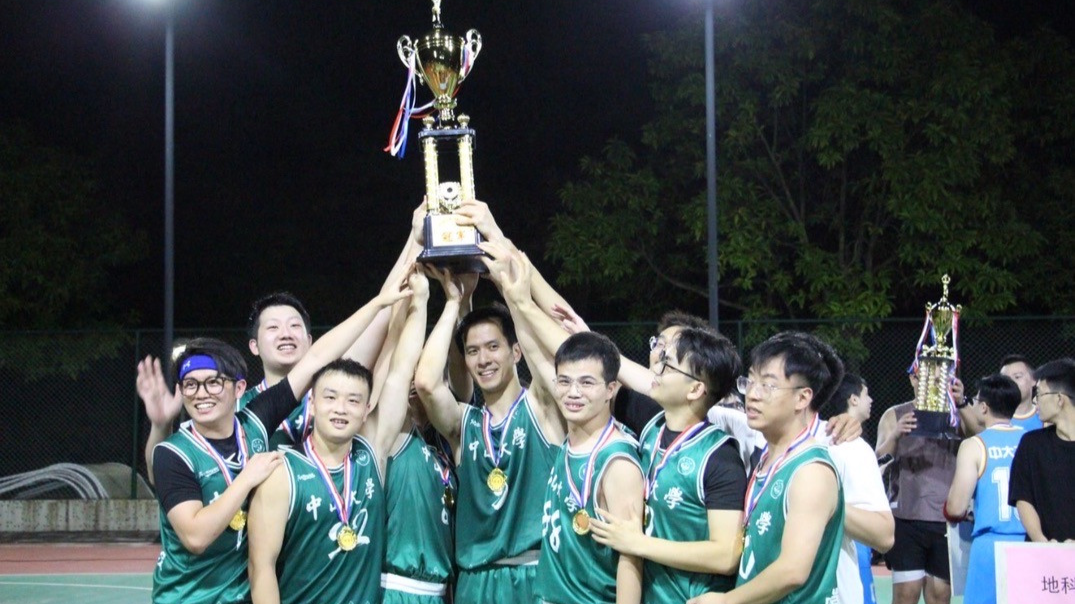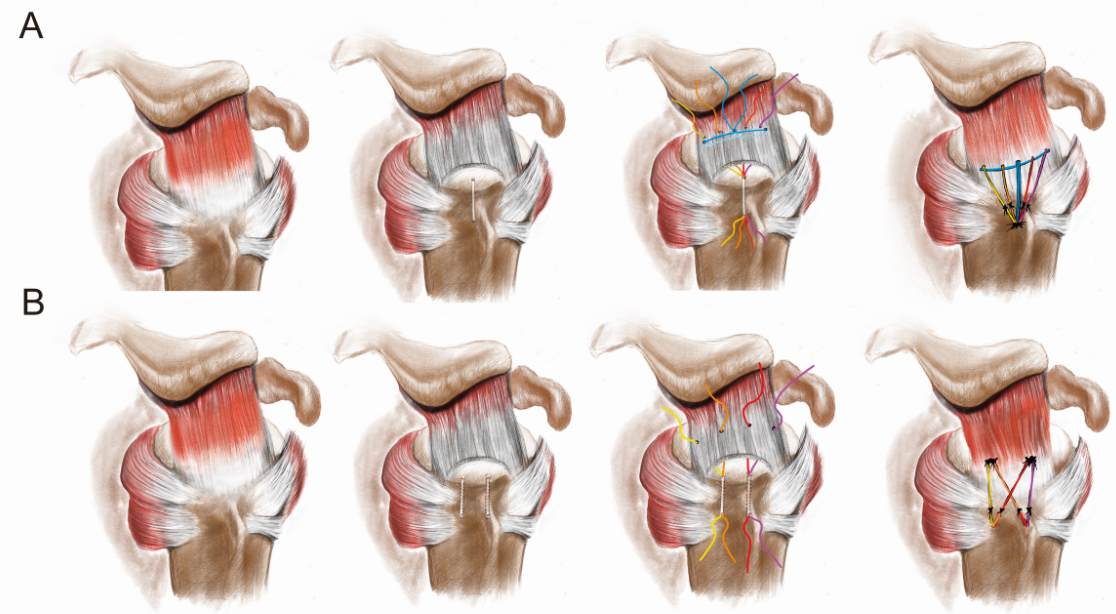"Thank you, Prof. Yang! You've cured my rotator cuff tear. Our basketball team gained the championship today!" It comes from a letter that Mr. Dou, a basketball lover, wrote to Prof. Yang Rui from the Department of Sports Medicine, Sun Yat-sen Memorial Hospital. Prof. Yang performed rotator cuff repair for Mr. Dou, using his original new technique H-loop (High-Resistance loop).

Mr. Dou (L4) holds the basketball championship trophy. (Photo provided to GDToday)
Mr. Dou came from Zhuhai, and he was also a surgeon. Two years ago, after his unintentional fall injury during sports, he had pain in the right shoulder joint, limited right hand activity and difficulty in raising his shoulder, which severely affected his work and life. At that time, he was unable to play basketball. For this purpose, Mr. Dou found Prof. Yang for treatment.
Detailed examination showed that Mr. Dou had a rotator cuff tear (supraspinatus tendon injury) which required surgical intervention.
Prof. Yang described that the primary role of the rotator cuff is to accomplish rotatory and lifting movements of the shoulder joint.
Four muscles control movements in all directions of the shoulder joint, and rotator cuff injury will attenuate or even lead to loss of the function.
Currently, the mainstay surgical option to treat rotator cuff injuries is minimally invasive surgery (arthroscopy). Prof. Yang performed rotator cuff repair for Mr. Dou with a novel method of H-loop knotless double-row technique.
After the operation, Prof. Yang Rui developed an individualized rehabilitation program for Mr. Dou. He recovered well, and as a surgeon, he returned to the operating table one month after the surgery.
At the same time, he also returned to his beloved basketball court and won the championship in the basketball game organized by his employer.
Prof. Yang Rui introduced that rotator cuff injury is the most common shoulder joint disease in middle-aged and elderly people. Traditional arthroscopic rotator cuff suture technology has achieved certain efficacy, but still has a high rate of retear.
In response to the shortcomings of traditional technique, Prof. Yang Rui has led the team to creatively propose the new technique.
While retaining the knotless advantage of the traditional technique, the initial suture strength of the rotator cuff is increased, the cutting effect of the suture on the rotator cuff and the impact of knots are effectively reduced, and it can protect the blood supply of the rotator cuff, reduce the number of built-in objects, as well as the risk of recurrence after repair.

H-loop-augmented knotless double row technique (A) VS conventional rotator cuff repair technique (B). (Photo provided to GDToday)
It was successfully selected in the list of Clinical Characteristic Technology Construction in Guangzhou, and has won the first prize of 2022 Clinical New Technology Award of Prof. Yang's hospital. He said that with the popularization of this technique, more patients would benefit from it.
According to Prof. Yang, many patients tend to confuse rotator cuff injury with frozen shoulder, which is actually commonly referred to as periarthritis of the shoulder.
Difference between frozen shoulder and rotator cuff injuries
Frozen shoulder and rotator cuff injuries both show shoulder pain, which can easily be confused and misdiagnosed. However, once the rotator cuff injury is treated as frozen shoulder, it can easily cause more severe rotator cuff tears, and even lead to disability.
"The main difference between them is that when having frozen shoulders, the patient is unable to open the arms, such as combing hair, rubbing the back, and even having difficulties when going to the toilet. However, with rotator cuff injuries, people generally have no strength and the arm cannot be lifted, or can be lifted but the strength is much lower than the other side."
Prof. Yang suggests that if shoulder pain occurs, people should seek medical advice from a shoulder specialist in the department of sports medicine or orthopedics for diagnosis and treatment as soon as possible.
What causes rotator cuff injuries?
Prof. Yang noted that there are many reasons for rotator cuff injury, mainly including trauma, tendon degeneration and aging. Young patients mainly suffer from accidental injuries such as sports and car accidents. The degeneration of the tendon itself may be the main factor in elderly patients. Injuries can be caused when patients simply lift a heavy object, meet a sudden brake when standing on the bus or metro, or put luggage on an elevated shelf.
"To prevent rotator cuff injuries mainly depends on enhancing a sense of prevention. When exercising, it is necessary to know which sports are easy to injure the shoulder joint, so as to protect yourself subconsciously, especially in competitive sports such as basketball and rugby, or sports that often require shoulder lifting such as badminton, volleyball, swimming, baseball, and so on. Before exercising, warm-up exercises are needed." Prof. Yang reminded, and added that "it is necessary to strengthen self-protection in daily lives to avoid accidents, and try to avoid inappropriate exercise or lifting heavy objects."
Author | Hannah, Yao Jingsen (intern)
Editor | Wing, Steven, Abby, Jerry
















